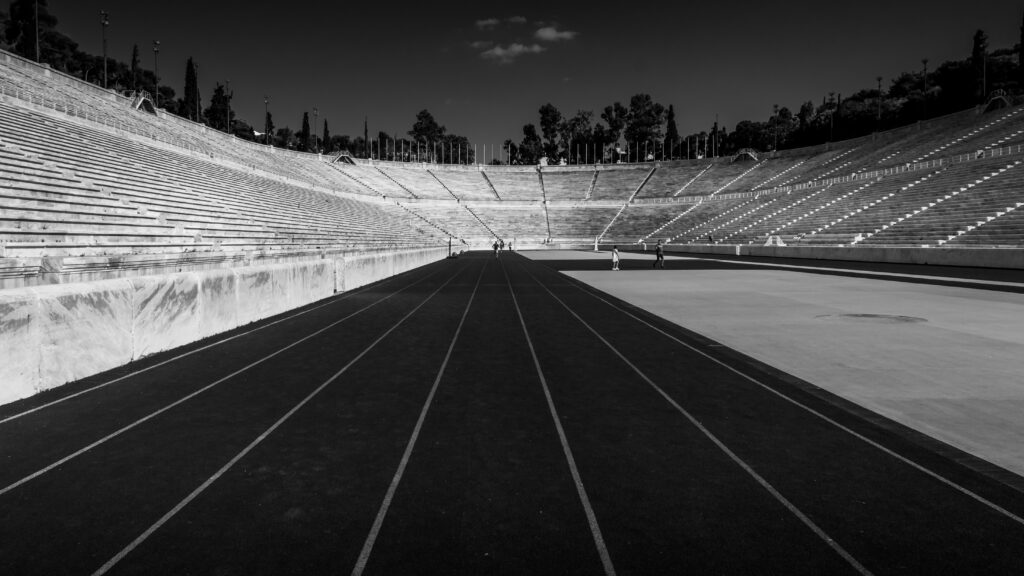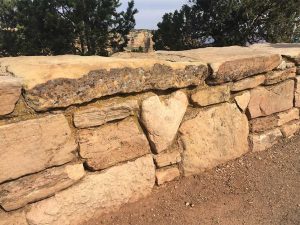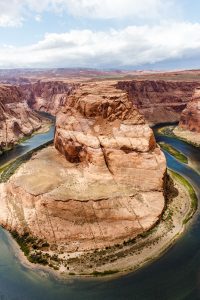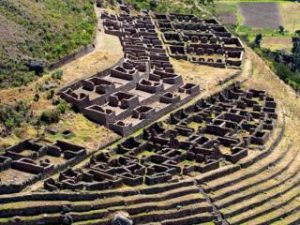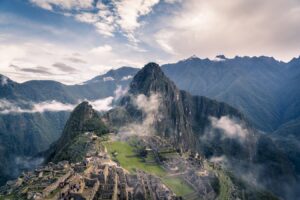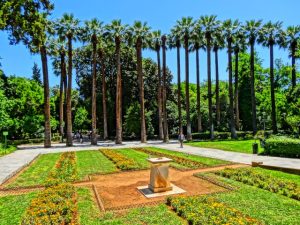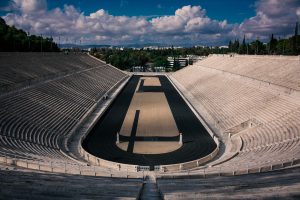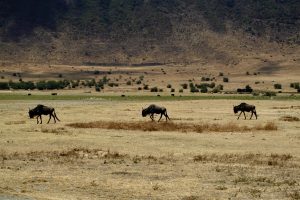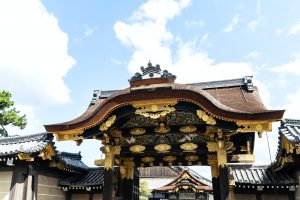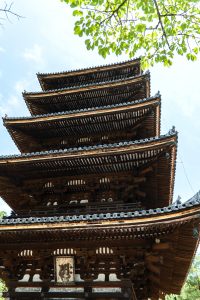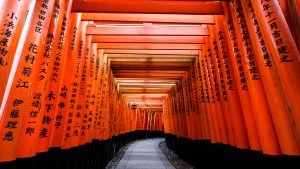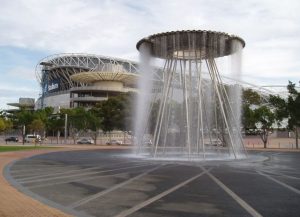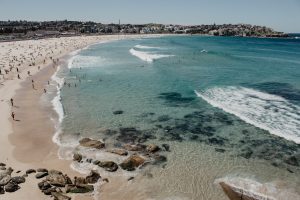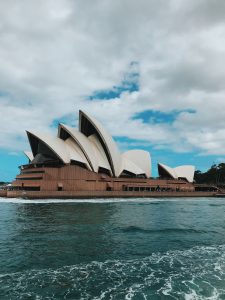Marathon Course Highlights
While we know 7 Marathons 7 Continents is virtual, we want to recreate a travel adventure of a lifetime! If you have any information that you think we should feature along the way, please email us at [email protected].
Here are just some of the highlights you’ll encounter along your journey.
North America – Grand Canyon National Park in Arizona, US
Yavapai Point on the South Rim
Start
Bright Angel Trailhead
Miles 1 – 10
Grand Canyon Railway
Take a trip back through time in a restored rail car! Since 1901, the 64-mile heritage railroad has carried passengers from Williams Arizona to the South Rim of Grand Canyon National Park.
Mile 0.5
Matrimony Heart Rock
Legend has it a young man placed the stone into the wall in 1934 to show his love for his sweetheart.
Mile 0.5
3 Mile Rest House
Boasts spectacular views
Mile 4
Tonto Trail
95-mile trail running from Garnet Canyon to Red Canyon
Mile 5.5
Garden Creek Waterfall
Mile 7
Pipe Creek Rest House
Take a quick stop to listen to the roar of the Colorado River and Pipe Creek.
Mile 9
Colorado River
Spans 1,450-miles, passing through seven states (Colorado, Wyoming, Utah, New Mexico, Nevada, Arizona, and California) and two nations, making it the sixth longest river in the United States.
Cross at Mile 10
Bright Angel Trail Bridge
Pedestrian/mule only bridge
Mile 10
Phantom Ranch
The only lodging below the canyon rim. The ranch can only be reached by mule, on foot or by rafting the Colorado River.
Mile 10.8
Ribbon Falls
Located just off North Kaibab Trail
Mile 15
Manzanita Creek
Mile 19
Roaring Springs Canyon
This scenic spring pours out of the cliffs into Bright Angel Creek
Mile 20
Bright Angel Point
This easy trail follows a ridge line and offers a panoramic north side view of the canyon.
Finish
South America – Tantac to Machu Picchu along the Incan Trail in Peru
Ollantaytambo
Located at 11,500 feet, amazing Incan ruins lie throughout this Incan village.
Start
Chillca
High mountain views along with Alpacas and Llamas make this section of trail memorable.
Mile 4
Urubamba River
This river is separated into the Upper Urubamba and Lower Urubamba, divided by the whitewater canyon, Pongo de Mainique. The Upper Urubamba runs past ruins of the Incan Empire, near the sacred Valley; meanwhile, today the Lower Urubamba is sparsely populated.
Miles 1-9
Patallacta
An Incan archaeological site located in the Urubamba valley. It is made up of ascending terraces that were dedicated to the cultivation of agriculture.
Mile 10
Llullucha Pampa
Fantastic views of the Pacaymayo valley.
Mile 15
Warmi Wanusqa
Mountain pass 4,200 meters high
Mile 16
Phuyupatamarca
A high altitude, Incan archaeological site in the Urubamba region. Known as “La Ciudad entre la Niebla” due to its located 3670 meters above sea level.
Mile 21.5
Wiñay Wayna
Built into a steep hillside along the Urubamba River.
Mile 23
Intipata
An archeological site formed by agricultural terraces with a convex shape.
Mile 23
Intipunku – Puerta del Sol
Once a fortress of Machu Picchu, it is now the final section of the Incan trail between the Sun Gate complex and Machu Picchu.
Mile 25
Casa del Guardián de la Roca Funeraria Puerta
Overlooks Machu Picchu
Mile 26
Puerta de la Ciudad
The old City gates to Machu Picchu
Finish
Temple of the Three Windows
Known for its three “windows”, this ancient stone temple offers sweeping views.
Finish
Machu Picchu
Machu Picchu is the most famous Incan city. Famous 15th century city for having intricate stonework and astronomical building and wall alignments, the city was abandoned and completed covered by the jungle until discovered by Hiram Bingham in 1911. Bingham has been cited as one possible basis for the character Indiana Jones.
Finish
Europe – Marathon to Athens in Greece
Marathon Run Museum
Running 26.2 miles is named for the ancient running legend of Pheidippides running from Marathon to Athens to warn the Athenians in 490 bc that the Persians were attacking the City of Marathon. The museum features memorabilia from marathons around the world, the Marathon Run Museum features heirlooms of Greek Olympians including champion Harilaos Vasilakos.
Start
Marathon Tomb Archaeological Site
Mile 2.5
Neos Voutzas
Offers stunning view of the Mediterranean.
Mile 4
Marathon City Hall
Mile 6
AEM
Supports athletic opportunities for children and adults
Mile 16.8
Athens Concert Hall
This artistic and educational multicultural center opened its doors in 1991.
Mile 24
Byzantine And Christian Museum
Displays over 25,000 artifacts including frescoes, paintings, and sculptures that date as far back as the 3rd century.
Mile 25
Cine Aegli Summer Cinema
Historic outdoor cinema which is surrounded by gardens
Mile 25.5
National Garden in Athens
A historical site, located behind Parliament, this 15.5 hectare plot features monuments, an open air museum, Children’s Library, sundial, and archaeological remains.
Mile 26
Zappeion Megaron
Built in the 1880s for the first modern Olympic games
Mile 26
Statue of Georgios Karaiskakis
Famous military commander and hero of the Greek war of independence.
Mile 26
Kallimarmaro
Kallimarmaro, or The Panathenaic Stadium, is the worlds only white marble stadium. Today, it is the finish line for the Marathon race, which was officially established for the 1896 Olympic Games.
Finish
Africa – Ngorongoro Conservation Area in Tanzania
Transit Picnic Site
Known for its abundance of birds and monkeys.
Mile 1
Ngorongoro Conservation Area
This protected area is part of the Serengeti ecosystem with volcanic highlands to the south and west. Tended by the Maasai, this land is home to Big five game, zebras and elands.
Entire Course
Lake Magadi
This southernmost lake in the Kenyan Rift Valley is covered by solid and semisolid soda which dyes its water a vivid pink. Known for its faulted volcanic rocks and wading birds, including flamingos.
Miles 9-15
Mti Mmoja
Pass by the Mti Mmoja region of Tanzania.
Mile 12
Ngorongoro Crater
Thought to have been formed 2.5 million years ago by a collapsing volcano cone post eruption. The crater is 20kms across, 600 meters deep and 300 square kms in area.
Mile 4-20
Maasai Dorf
Village of the Maasais
Mile 18.5
Olduvai Gorge
Site where paleoanthropologist Louis Leakey and wife Mary discovered Lucy. The team made unprecedented discoveries of hominids millions of years old linked to human evolution.
Mile 20
Village of Kimba
Elephants abound in this village
Mile 23
Ngorongoro Crater Lodge
You can see most of the route you ran from your dinner table at the lodge overlooking the crater.
Finish
Asia – Kyoto, Japan
Nijō Castle
The castle consists of two concentric rings of fortifications, today it is listed as one of the seventeen Historic Monuments of Ancient Kyoto and is designated by UNESCO as a World Heritage Site.
Start
Katsura River
The river area features some of the oldest shrines in Kyoto and supports acres of agriculture on its flood plain.
Miles 4 and 5.5
Matsuo-Taisha Shrine
The dominant Shinto shrine in the western part of Kyoto. Houses three of the oldest and best preserved wood card images and features a massive outer gate with two guardian deities.
Mile 4.4
Arashiyama
Bamboo Forest
Mile 5
Kimono Forest
Trains-stop art installation featuring 600 backlit pillars decorated with a “Yuzen” print.
Mile 5.2
Sagatenryuji Tateishicho
Bamboo Forest
Mile 6
Rakushisha
Thatched hermitage of the 17th century haiku masters Mukai Kyorai, with poems displayed in ink and stone
Mile 6.5
Nison-in Temple
The structure was built in 1613 at the site of Fushimi Castle and has since be relocated here.
Mile 6.6
Daikakuji Temple
The Shingon Buddhist temple became a temple in the ninth century; however, the present buildings date from the 16th century onwards.
Mile 7
Omuro Sakura
Ninna-ji, built in the year 88 and now a UNESCO World Heritage site, features world renowned cherry blossoms.
Mile 10
Domotoinsho Museum
Features canvases by renowned artist Insho Domoto
Mile 11.5
Kyoto Imperial Palace
The former ruling palace of the Emperor of Japan until 1868.
Mile 14
Kamogawa Delta
Part of the Kamo River, the main river in the Kyoto that runs north to south, through the center of the city.
Mile 16
Tadekura Bridge
Pedestrian bridge
Mile 17
National Museum of Modern Art, Kyoto
Features a permanent collection of local 20th century artists, plus rotating exhibits.
Mile 21
Yasaka Shrine
This Shinto shrine was erected in 656 AD. It is today home to many festivals
Mile 22
Maruyama Park
Known for its seasonal cherry blossoms
Mile 22
Ryozen Musem
Includes hands on exhibits of the Edo and Meiji Restoration periods
Mile 22
Kiyomizu-dera
Offers spectacular views of the city
Mile 23
Guan Bridge
Covered bridge which overlooks Tokofu-ji temple
Mile 25.5
Fushimi Inari Taisha
Mountainside Shinto shrine dating from 711 AD. The path features hundreds of traditional gates.
Finish
Australia – Sydney
Sydney 2000 Olympic Games Cauldron
Start
Sydney Olympic Park
Host site of the 2000 Olympic Games
Mile 0.1
Cooks River
Flows by several well known parks including the Canterbury Park Racecourse
Miles 6-10.5
Petersham Town Hall
Presides over the inner west, a unique creative community with vibrant and diverse neighborhoods
Mile 8.2
Alan Davidson Oval
Cricket pitch and AFL ground
Mile 10.8
Moore Park
A great space for runners or walkers, located just above the Moore Park golf range
Mile 13
Centennial Park
Large Victorian park
Mile 14
The Celebration Steps
Home to over 300 engraved pavers with personalized messages celebrating special occasions and significant loved ones.
Mile 14.5
Bronte House and Park
Gothic style cottage on 42 acres of land at Nelson Bay. This area is a State Heritage site.
Mile 16
Mackenzies Bay
Located in New South Wales, this inlet is between Bondi and Tamarama Beach.
Mile 19
Bondi to Bronte Coastal Walk
4 km trail along the cliffs between Bondi and Bronte beaches
Mile 19
Rushcutters Bay Park
Bayfront park
Mile 23.8
Artspace
Home to contemporary exhibitions, performances, artist residencies and public programs
Mile 25
Succulent Garden
Home to some of The Royal Botanic Gardens’ strangest and most beautiful plants
Mile 25.5
Sydney Conservatorium of Music
One of the oldest and most prestigious schools in Australia
Mile 26
Sydney Opera House
The Sydney Opera House is a multi-venue performing arts center at Sydney Harbor in Sydney, New South Wales, Australia. It is one of the 20th century’s most famous and distinctive buildings. Chief architect Jorn Utzon began construction of this landmark theater in 1959.
Finish
Antarctica – McMurdo Station on Ross Island
Ross Ice Shelf
The Ross Ice Shelf is the largest ice shelf in Antarctica (as of 2013 it had an area of roughly the size of France)
Mile 1-23
McMurdo Station
Established in 1955, it is America’s largest research station on Antarctica. It is built on the bare volcanic rock of Ross Island.
Start
Ice Runway Road
The principle runway for the US Antarctica Program during the summer. The sea-ice runway is constructed at the start of each season and is used until early December when the ice begins to break up.
Mile 1-10
McMurdo Air Station
Mile 10
Williams Field
Two snowy runways situated on 8 meters of compact snow. The Air Force provides flights between Christchurch, New Zealand and McMurdo for the US Antarctic Program.
Mile 19
Castle Rock Loop
Named by Robert Falcon Scott of the 1901 British National Antarctic Expedition, this bold rock crag stands 1,360 feet high.
Mile 22
